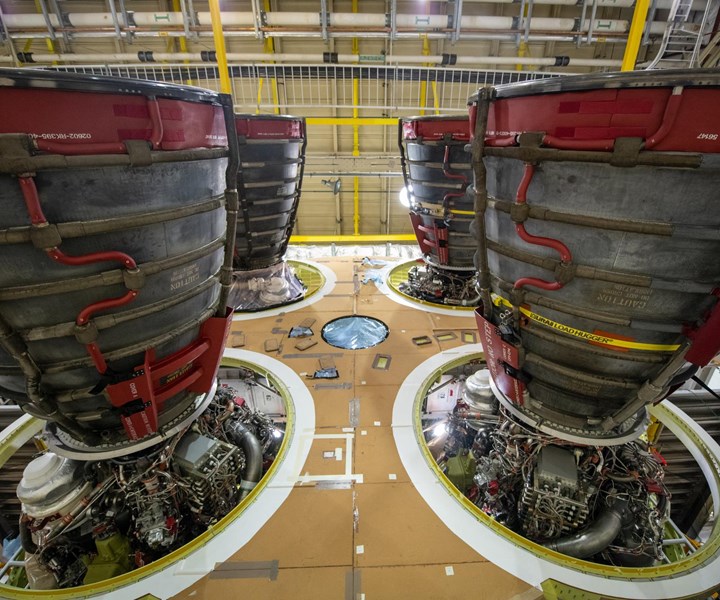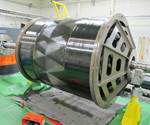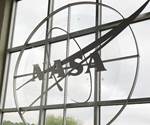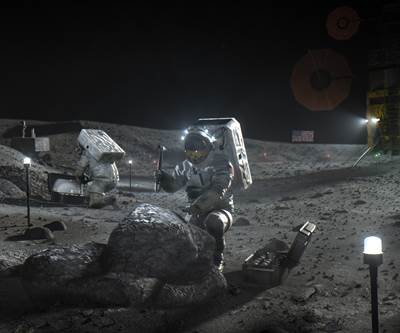NASA extends SLS rocket engines contract with Aerojet Rocketdyne
Under the $1.79 billion contract, Aerojet Rocketdyne will manufacture 18 additional Space Launch System (SLS) RS-25 rocket engines for Artemis missions.

Source | NASA
NASA announced on May 1 that it has awarded a contract to Aerojet Rocketdyne (Sacramento, Calif., U.S.) for the manufacture of 18 additional Space Launch System (SLS) RS-25 rocket engines to support Artemis missions to the moon.
The new contract, valued at $1.79 billion, includes labor to build and test the engines, produce tooling and support SLS flights powered by the engines. This modifies the initial contract awarded in November 2015 to recertify and produce six new RS-25 engines, bringing the total contract value to almost $3.5 billion with a period of performance through Sept. 30, 2029, and a total of 24 engines to support as many as six additional SLS flights.
“This contract allows NASA to work with Aerojet Rocketdyne to build the rocket engines needed for future missions,” says John Honeycutt, the SLS program manager at NASA’s Marshall Space Flight Center in Huntsville, Ala., U.S. “The same reliable engines that launched more than 100 space shuttle missions have been modified to be even more powerful to launch the next astronauts who will set foot on the lunar surface during the Artemis missions.”
Working with NASA, Aerojet has implemented a plan to reduce the cost of the engines by as much as 30% by using more advanced manufacturing techniques to modify some of the rocket components.
Each SLS rocket uses four RS-25 engines, providing a total of 2 million pounds of thrust to send SLS to space. The SLS rocket leverages the assets, capabilities, and experience of NASA’s Space Shuttle Program, using 16 existing RS-25 shuttle engines for the first four SLS missions. These engines were updated with new controllers – the brains that control the engine – and upgraded and tested to fly at the higher performance level necessary to launch the SLS, which is much larger and more powerful than the shuttle.
The rocket engines are mounted at the base of the 212-foot-tall core stage, which holds more than 700,000 gallons of propellant and provides the flight computers that control the rocket’s flight. According to NASA, the engines for the Artemis I mission to the moon have already been assembled as part of the core stage, which is undergoing Green Run testing, an integrated test of the entire stage and that culminates with the firing of all four RS-25 engines.
“We’ve already begun production on the first six new RS-25 engines,” says Johnny Heflin, the SLS engines manager. “Aerojet Rocketdyne has restarted the production lines, established a supplier base and is building engines using advanced techniques that reduce both the cost and time for manufacturing each engine.”
The engines are built at Aerojet Rocketdyne’s factory in Canoga Park, California. Working with NASA, Aerojet has implemented a plan to reduce the cost of the engines by as much as 30% by using more advanced manufacturing techniques to modify some of the rocket components. Some of these modified components have already been tested during engine tests that replicate the conditions of flight. The new digital controllers are built by Honeywell Aerospace in Clearwater, Florida, a major subcontractor to Aerojet Rocketdyne.
Related Content
A new era for ceramic matrix composites
CMC is expanding, with new fiber production in Europe, faster processes and higher temperature materials enabling applications for industry, hypersonics and New Space.
Read MorePlant tour: Joby Aviation, Marina, Calif., U.S.
As the advanced air mobility market begins to take shape, market leader Joby Aviation works to industrialize composites manufacturing for its first-generation, composites-intensive, all-electric air taxi.
Read MoreMaterials & Processes: Fibers for composites
The structural properties of composite materials are derived primarily from the fiber reinforcement. Fiber types, their manufacture, their uses and the end-market applications in which they find most use are described.
Read MorePlant tour: Spirit AeroSystems, Belfast, Northern Ireland, U.K.
Purpose-built facility employs resin transfer infusion (RTI) and assembly technology to manufacture today’s composite A220 wings, and prepares for future new programs and production ramp-ups.
Read MoreRead Next
Aerojet Rocketdyne to provide propulsion for Orion spacecraft fleet
In a recent contract with Lockheed Martin, Aerojet Rocketdyne engines and other products will be used on NASA’s Orion spacecraft for three Artemis missions.
Read MoreComposites in the race to space
Advanced materials use in current and upcoming NASA missions.
Read MoreNASA names companies to develop human landers for Artemis
Blue Origins, Dynetics and SpaceX are developing human landing systems concepts for Artemis’s 2024 moon mission.
Read More
.jpg;width=70;height=70;mode=crop)

























